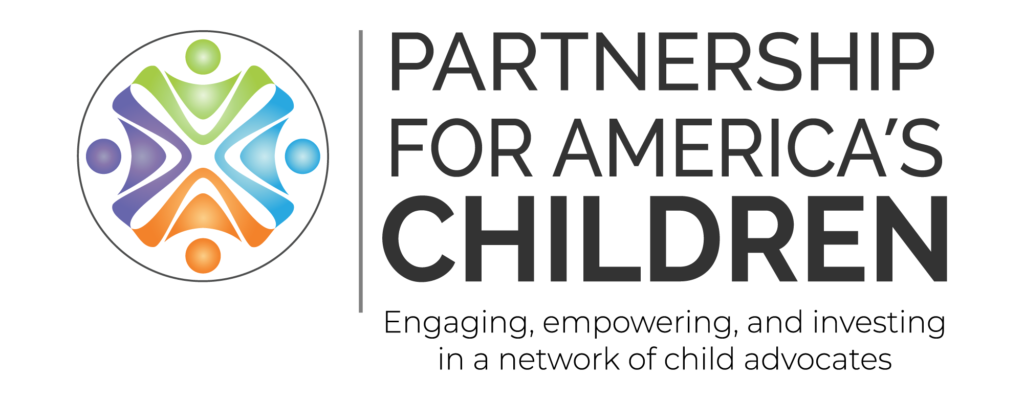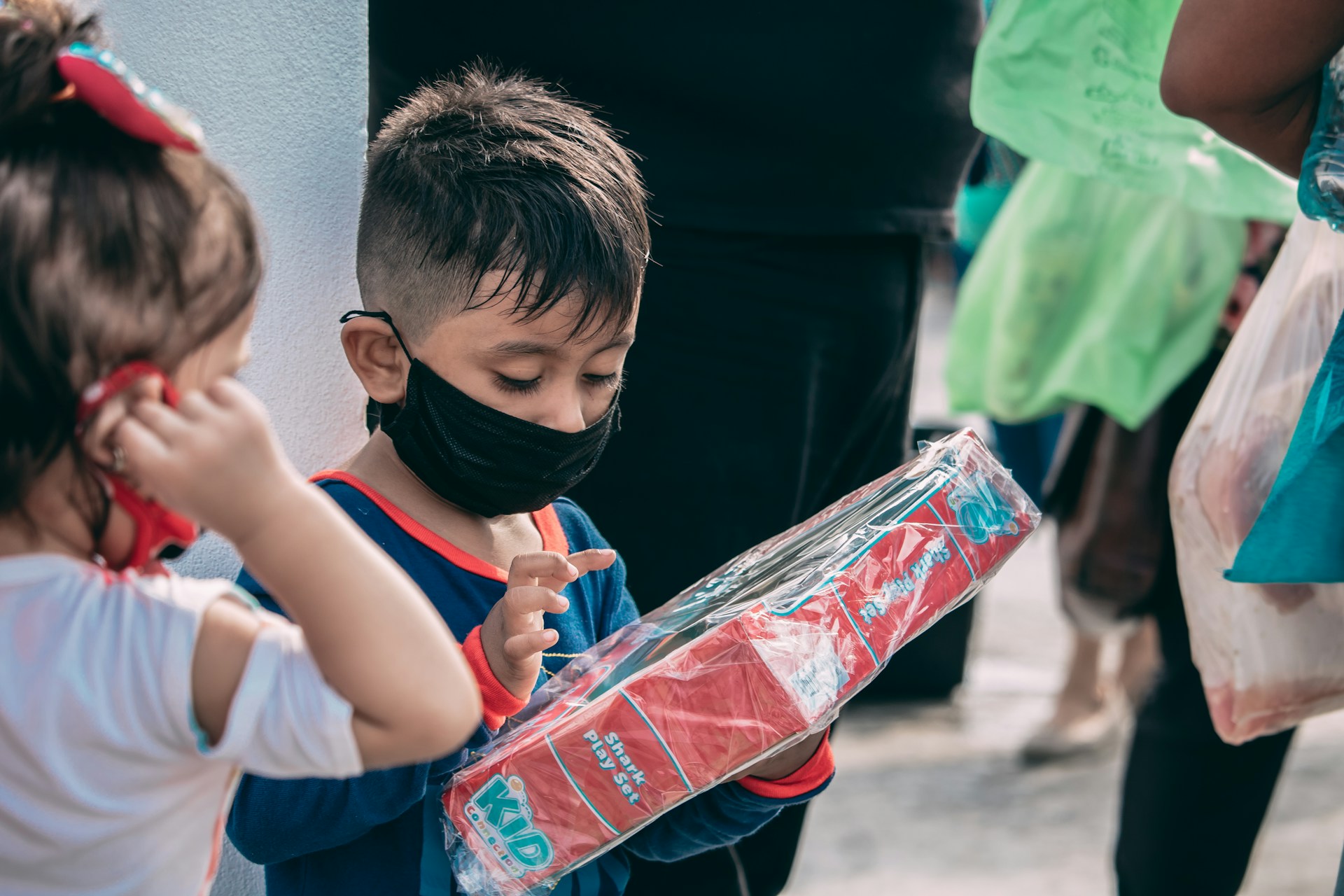Photo by Claudia Raya on Unsplash.
This blog is the first in a two-part series on Public Policy for Economic Mobility.
The Biden administration’s response to the COVID-19 pandemic created an unprecedented public policy laboratory. One of the greatest success stories was the expanded Child Tax Credit, which lifted nearly 3 million American children out of deep poverty according to the Census Bureau – a previously unthinkable achievement. While the US Senate has let the expanded Child Tax Credit expire, some states are taking action to keep as many children as possible from slipping back into grinding poverty.
This blog explores how child advocacy organizations are working to expand or launch state Child Tax Credit and/or Earned Income Tax Credit (EITC) policies in Illinois, Kansas, New York, and Connecticut. Next month, we’ll look at state-based campaigns for Baby Bonds, Child Savings Accounts, and other types of direct cash assistance.
Effective coalitions are key
Connecticut Voices for Children (CVC) has been part of a coalition fighting for a Connecticut EITC for over 15 years. Connecticut’s FY 24-25 budget increased the state Earned Income Tax Credit (EITC) from 30.5 percent to 40 percent of the federal EITC. Their campaign now includes a Child Tax Credit (CTC) campaign as well. Connecticut’s FY 23 revised budget established a one-time $250 per-child state child tax rebate, which CVC is working to expand and make permanent.
Kansas Action for Children does not have a formal coalition working towards a state CTC, but has brought together a loose partnership of around a dozen organizations who provided testimony in support of a state Child Tax Credit in a legislative hearing this year. Kansas already has a strong EITC.
The Children’s Agenda (NY) is working for changes to the state’s tax code that would help give families with children more funding, modeled on the federal Child Tax Credit under the American Rescue Plan Act. A broad coalition includes Partnership members including the Schuyler Center, Citizens’ Committee for Children in NYC, Westchester Children’s Association, as well as numerous other organizations.
In Illinois, Children’s Advocates for Change is part of a coalition of 50 groups who worked together to successfully advocate for a state Child Tax Credit during the 2024 legislative session. In a negotiated budget deal, the coalition ultimately won a new refundable state Child Tax Credit, available to taxpayers with at least one child under the age of 12. For the tax year beginning on January 1, 2024, the credit is equal to 20% of the value of the taxpayer’s available Illinois Earned Income Tax Credit, increasing to 40% in 2025. Illinois’ coalition had a mix of grassroots organizations, groups with policy expertise, and groups involved in advocacy, that brought all of the needed elements together. Weekly coalition meetings allowed partners to share strategy and make sure that if one group couldn’t speak to a specific legislator, another could make the meeting happen and keep moving the bill forward.
Messages and messengers that get the job done
Tax policy is not always the easiest sell. These organizations have found some important messaging keys that resonate across political differences:
Demonstrate how every family benefits. While narrowly-targeted tax strategies sound good to policy experts, they tend to fall flat with many voters and elected officials, regardless of political affiliation, because they can feel unfair. “The fact that a CTC would help low-income families and middle-income families – really every family – is the way we designed our CTC, to impact every family regardless of their income,” says Adriene Olejnik of Kansas Action for Children. The cost of housing, groceries, and child care are high (and often rising) – and nearly every family could benefit from more support.
Show families exactly how much they stand to gain. Connecticut Voices published a 2023 report the “Cost and Distributional Estimates of the Governor’s Major Tax Proposals for FY 2024 – FY 2025,” which demonstrated the dollar amount individuals and families with children would receive due to the EITC increase ($627/year for a family with 2 children, for example). Going a step further, the Children’s Agenda (NY) put together this calculator, so that families living with low incomes could find out how much more money they would take home if the Working Families Tax Credit became law in New York State. Putting a power-building edge on the data, Children’s Advocates for Change (IL) worked with the Economic Security Project to show how many children would potentially benefit in each legislative district.
Impacted people are powerful storytellers. “In Connecticut, impacted families and voices have always been some of the most effective messengers,” says Nick Teeling of Connecticut Voices for Children. “Lawmakers need to hear directly from the people they serve about the broad-based challenges Connecticut’s low- and middle-income families face.” Human services providers and early care providers are also excellent spokespeople, because they are so often directly impacted themselves. They can speak both to their own families’ experiences, and the potential benefits to the families they serve.
Talk about the specific impacts. What exactly do families stand to gain? Advocates demonstrated how a state CTC can defray child care costs, basic necessities like housing and groceries, and other impacts lawmakers might not have considered. The YWCA of northeast Kansas helps women who are being trafficked and provide domestic abuse – they testified at the legislature about how a state CTC can support women who are escaping dangerous situations.
Speak with a single voice. In a big coalition, it’s important to operate in synch, says Mitch Lifson of Chidren’s Advocates for Change. “While each group was free to make its own remarks, we were essentially trying to operate in a coordinated fashion with clear shared messaging.” That made it much easier on legislators, who need to get consistent information when they’re hearing from lots of different interest groups.
Nick Teeling of Connecticut Voices for Children sums up the winning message this way: “Ultimately, creating policies that put more money in the pockets of hardworking families will benefit their immediate needs, and support our economy overall.”
Biggest challenges
None of the organizations working on a state CTC or EITC said that they encountered direct, organized opposition to their proposals. Instead, their biggest obstacle is the cost. Legislators need to know exactly how much these strategies will cost, and where the money will come from. To go to bat for such a big-ticket item, elected officials need a lot of public will and power-building behind them.
Advocates can overcome the cost hurdle by showing legislators how a state CTC and/or EITC aligns with their top priorities. “Kansas has a strong fiscal balance right now,” says Adrienne Olejnik of Kansas Action for Children. “The state has almost $3B in surplus and over the last few years, we’ve had a really strong financial management approach… Now there is a strong appetite by both parties to give money back through tax cuts. A Child Tax Credit is a really good way to, instead of just being the naysayers of don’t cut this income tax, instead do this to help families. This is proactive.”
Advice for campaigns in other states
Compromise is necessary: “Illinois has been in a situation for a number of years, where leaving aside the pandemic aid from the federal government, the revenues have not matched needed expenditures,” says Mitch Lifson of Children’s Advocates for Change. “It became clear in 2023 [that] the $700 per-child proposal, which would have cost the state over $700M, was not going to pass. So therefore the $300 per child credit was introduced this year and ultimately passed.”
Adrienne Olejnik says look at what peer states are doing. Kansas modeled their tax policy on New Mexico’s, for example. “There’s a lot of ways to not start from scratch on this policy, and to reach out to other advocates who have made some progress, even if they haven’t gotten across the finish line yet.”
“Play your position,” says Dr. Tasha Green Cruzat of Children’s Advocates for Change. “Because we are such a small organization, it’s tough for us to be on the ground in communities like we would love to be. The way that we handle that is that we leverage our partnerships and we work together.”
Resource Round-Up
Tax policy is not always the easiest or most exciting topic to explain to legislators or partners – despite the significant positive benefits to families. Partnership members graciously shared some of their best fact sheets, reports, and backgrounders for this blog – see the roundup of state resources below.
State | Resource | Notes |
New York | The Children’s Agenda fact sheet on how consolidating existing state tax credits into a new Working Families Tax Credit would help families | |
New York | Give Families Credit: Making New York Tax Policy Work for Families | The Children’s Agenda policy brief, which also analyzes other states’ tax credits aimed at supporting low income families with children. |
New York | The Children’s Agenda calculator shows families living with low incomes how much more money they would take home if the Working Families Tax Credit became law in New York State. | |
Kansas | Legislative testimony from several KS organizations | |
Kansas | CTC Blog | |
Connecticut | CT Voices Child Tax Credit Executive Summary | |
Connecticut | CT Voices Child Tax Credit Full Report | |
Connecticut | CT Voices Child Tax Credit Fact Sheet | |
Connecticut | The Role of a Connecticut Child Tax Credit (CT CTC) in Eradicating Poverty and Advancing Racial and Ethnic Equity | CT Voices Child Tax Credit Fact Sheet |
Connecticut | CT Voices Child Tax Credit Fact Sheet | |
Illinois | Fact Sheet | |
Illinois | Blog |
One of the lessons we learned in 2021 is that we already have the tools in hand to end child poverty. These organizations are building the power and the public will to leverage those tools for kids in their own states.
Many thanks to Dr. Patrick O’Brien and Nick Teeling with Connecticut Voices for Children, Adrienne Olejnik at Kansas Action for Children, Pete Nabozny of the Children’s Agenda (New York), and Mitch Lifson and Dr. Tasha Green Cruzat at Children’s Advocates for Change (Illinois) for generously sharing their expertise and insights for this blog.

